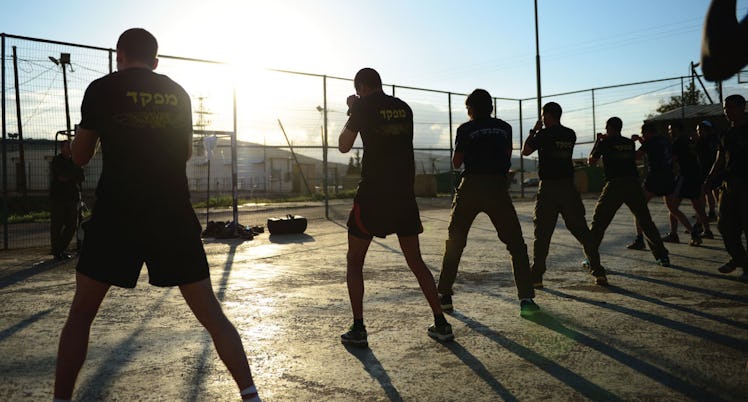A Krav Maga Expert’s (Mostly) Fist-Free Guide To Dealing With Bullies
Use your words, then a devastating palm strike.

When kids get bullied, it tends to go one of two ways later in life: They beat their bullies or they join them. Patrick Lockton was pushed around in his childhood, and he did the former by founding The Krav Maga Institute (KMI), where he teaches kids how to beat their beaters.
“I grew up in the projects in London, and I had 3 younger sisters. I didn’t know how to defend myself, so I had to learn,” says Lockton. “Now that I have kids, I want to pass it on to them in a very practical, social way.”
You may know Krav Maga as that Israeli Defense Forces martial art that lacks the poetry of karate and makes up for it with plenty of ca-razy. It’s not just eye gouging and fish-hooking, though — it’s also a method of self-defense that focuses on situational awareness and self-esteem. His particular system was designed specifically with kids in mind and consists of 2 programs: Kids Safe and Bully-Proof. Here’s the gist of what both would teach your teach your kid about getting and giving respect.
Young Kids Need Lessons In Respect, Not Hitting
Kids Safe is Lockton’s intro class for 5 and 6-year-olds and it doesn’t teach the finer, skull-cracking points of the fighting technique. He says that those kids should instead be focusing on situational awareness, confidence building, and socializing more than learning what to do when someone swipes your Snack Pack.
“At a younger age, bullying is less of a problem, so this about teaching them to respect themselves and others and be aware of their surroundings,” he says. “It’s a lot of common sense techniques — like running away to get out of danger, or biting.” If your toddler already does that, they’re probably ready for the prison yard.
How To Fall; How Not To Flinch
Much like Mr. Miyagi did to Daniel-san, Lockton employs a “wax on, wax off” technique, meaning kids are taught self-defense moves through movements they use in everyday life. “We have them start high fiving — something that kids do a lot and find fun — and that becomes a strike,” he says.
One of the big things that Krav Maga teaches is how to take a fall. If you’re pushed backward (a go-to bully move), land on the forearms and don’t let your head hit the floor. Nobody can defend themselves if they’re concussed.
Lockton also uses movements like throwing a tennis ball to teach how to deflect a punch. He has kids hold onto their ears to learn the basics of keeping their guard up. And he’ll even play a few rounds of the hand slapping game so they can learn how not to flinch. Nobody is going to mess with the kid who doesn’t flinch when they hit in the head with a carton of milk.
Teach Them Verbal Judo
When pre-teens and teenagers hit the puberty Thunderdome, Lockton and his team do more than just teach them to throat punch in the Bully-Proof class. They engage teens in situational role playing and, for added realism, even have a few real live bullies show up to the class. Because it’s one thing to kick the crap out of someone who is messing with you, it’s harder to understand why they’re messing with you.
“Krav Maga wasn’t scientific enough to really deal with the problem head on, so we partnered with a psychologist who specializes in bullying. One of them is even one of our instructors,” he says. “We do something called verbal Judo. We put kids in the position of being bullied and bullying others. It helps them gain an understanding of why the bullying is happening and what they can do.”
It’s Not Their Fault
Lockton says that facing these tough guys (and girls) shows his students that being bullied doesn’t have anything to do with them personally. Kids often blame themselves for being picked on, but it’s more about the insecurity of the one doing the pushing, then the pushed. The role playing and the games help them understand what’s going on in a meaningful way. But, if they fail to reach a detent — palm strike!
This article was originally published on